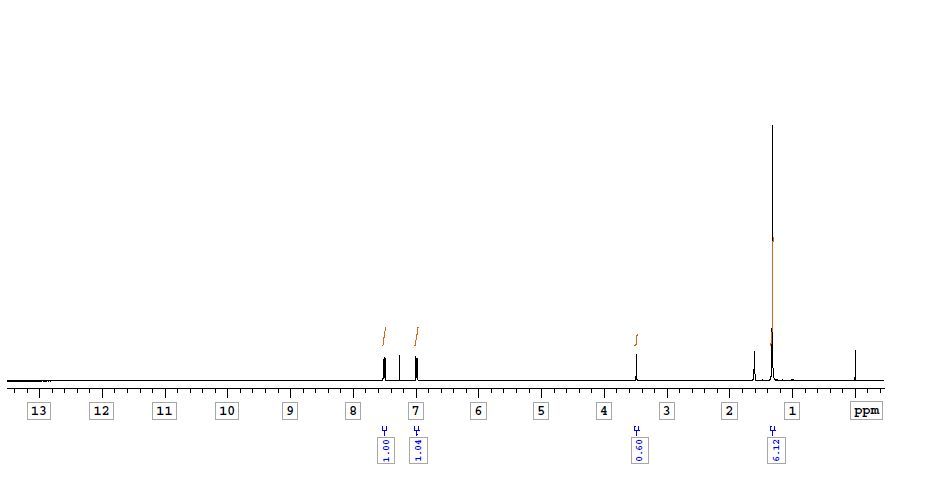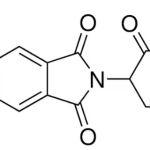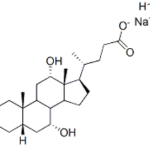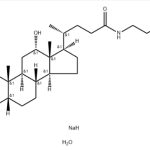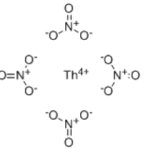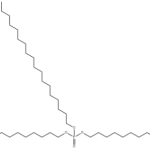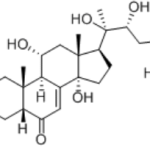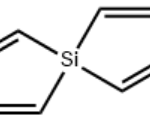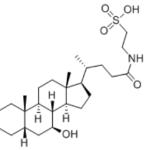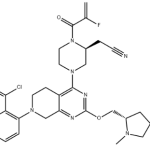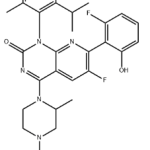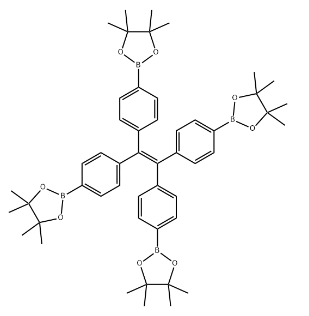
- Identification
- Properties
- Safety Data
- Specifications & Other Information
- Links
- Quick Inquiry
Identification
CAS Number
1660996-72-4
Name
1,1,2,2-Tetrakis(4-(4,4,5,5-tetramethyl-1,3,2-dioxaborolan-2-yl)phenyl)ethene
Synonyms
1,3,2-Dioxaborolane, 2,2′,2”,2”’-(1,2-ethenediylidenetetra-4,1-phenylene)tetrakis[4,4,5,5-tetramethyl- [ACD/Index Name]
2,2′,2”,2”’-(1,1,2,2-Ethenetetrayltetra-4,1-phenylene)tetrakis(4,4,5,5-tetramethyl-1,3,2-dioxaborolane) [ACD/IUPAC Name]
2,2′,2”,2”’-(1,1,2,2-Éthènetétrayltetra-4,1-phénylène)tétrakis(4,4,5,5-tétraméthyl-1,3,2-dioxaborolane) [French] [ACD/IUPAC Name]
2,2′,2”,2”’-(1,1,2,2-Ethentetrayltetra-4,1-phenylen)tetrakis(4,4,5,5-tetramethyl-1,3,2-dioxaborolan) [German] [ACD/IUPAC Name]
1,1,2,2-Tetrakis(4-(4,4,5,5-tetramethyl-1,3,2-dioxaborolan-2-yl)phenyl)ethene
1660996-72-4 [RN]
SMILES
B1(OC(C(O1)(C)C)(C)C)c2ccc(cc2)C(=C(c3ccc(cc3)B4OC(C(O4)(C)C)(C)C)c5ccc(cc5)B6OC(C(O6)(C)C)(C)C)c7ccc(cc7)B8OC(C(O8)(C)C)(C)C
StdInChI
InChI=1S/C50H64B4O8/c1-43(2)44(3,4)56-51(55-43)37-25-17-33(18-26-37)41(34-19-27-38(28-20-34)52-57-45(5,6)46(7,8)58-52)42(35-21-29-39(30-22-35)53-59-47(9,10)48(11,12)60-53)36-23-31-40(32-24-36)54-61-49(13,14)50(15,16)62-54/h17-32H,1-16H3
StdInChIKey
IMKQIUDDYPXPIU-UHFFFAOYSA-N
Molecular Formula
C50H64B4O8
Molecular Weight
836.282
EINECS
Beilstein Registry Number
MDL Number
Properties
Appearance
Melting Point
Boiling Point
Safety Data
Symbol
Signal Word
Warning
Hazard statements
H302-H315-H319-H335Precautionary Statements
P261-P305+P351+P338WGK Germany
3
Specifications and Other Information of Our
Identification Methods
HNMR, HPLC
Purity
98% min
Specific Optical Rotation
Heavy Metals
Water
Loss on Drying
Residue on Ignition
Single Impurity
Total Impurities
Shelf Life
1 year
Storage
Known Application
1,1,2,2-Tetrakis(4-(4,4,5,5-tetramethyl-1,3,2-dioxaborolan-2-yl)phenyl)ethene has important applications in the field of materials science. It serves as a starting material for the synthesis of organic semiconductor materials, fluorescent materials, and light-emitting diode materials. By modifying and functionalizing its structure, the optical, electronic, and conductivity properties of materials can be controlled, enabling their use in optoelectronic devices, light sensors, organic solar cells, and other fields.
Additionally, due to the presence of boron functional groups in 1,1,2,2-Tetrakis(4-(4,4,5,5-tetramethyl-1,3,2-dioxaborolan-2-yl)phenyl)ethene, it has potential applications in catalysis. It can act as a ligand in the formation of metal catalysts and catalyze various organic reactions, including cross-coupling reactions, hydrogenation reactions, and alkene cyclization.
This compound also finds applications in pharmaceutical research and development. It can be used to construct biologically active molecular scaffolds and synthesize potential drug molecules or drug intermediates. Its unique structure and chemical properties make it important in drug design and synthesis.
General View of Documents
NMR of 1,1,2,2-Tetrakis(4-(4,4,5,5-tetramethyl-1,3,2-dioxaborolan-2-yl)phenyl)ethene CAS 1660996-72-4
Links
This product is developed by our R&D company Warshel Chemical Ltd (https://www.warshel.com/).
Quick Inquiry
Fill out our inquiry form and one of our experts will be in touch with you shortly.

